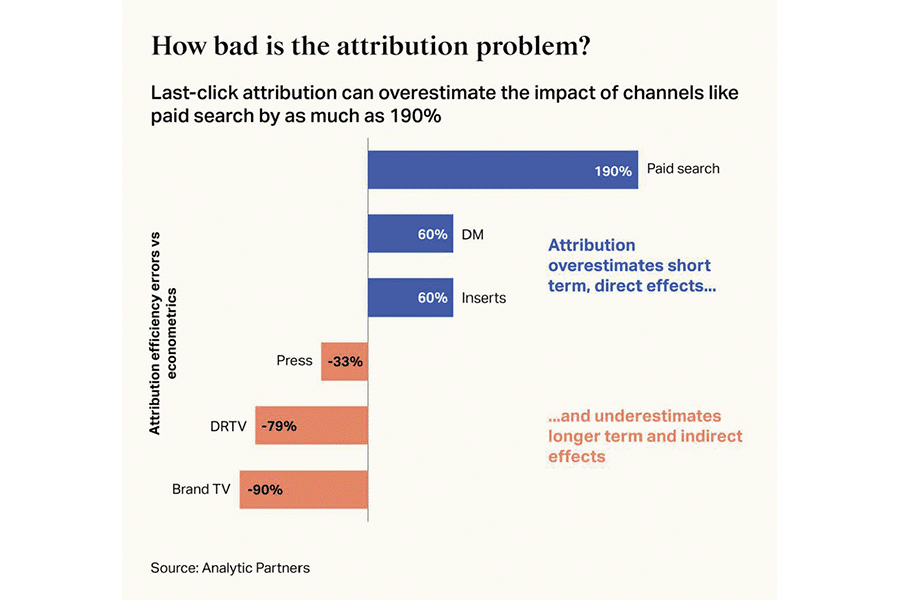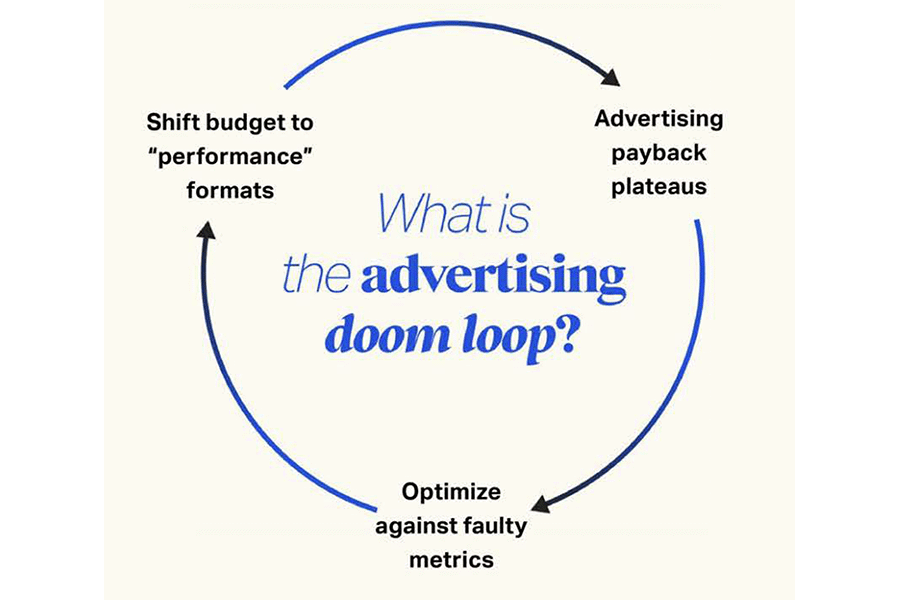Listen above or read below
How Marketing Metrics are Lying to You
Wasted Days and Wasted Nights [i]
Once upon a time, in a land not so far away…
The UK’s Shared Rural Network programme aimed to provide 4G coverage for 95% of the country, (defined as 95% of the geographical area, not 95% of the people.) This led to companies building telecoms masts on cheap land in remote areas in Scotland, providing coverage to exactly zero people. It met the target, and it was useless. [ii]
Meanwhile, in the Soviet Union…
A factory that fabricated metal products had a quota for scrap metal for recycling. The factory was operating more efficiently than expected so it wasn’t generating as much scrap as expected. Since the factory failed to meet its scrap metal quota, the authorities threatened to fine it. The factory personnel chose the perfectly rational response: they converted good zinc metal sheets into scrap, and thus fulfilled their scrap metal quota. [iii]
Now, every great story has a protagonist and antagonist, a Good Guy and a Bad Guy, conflict and resolution. A winner and a loser. This one is no different. But let me warn you: this story features a plot twist.
So, what do Soviet Scrap Metals and Scottish Cell Towers have to do with bad marketing results? Both offer easy-to-grasp examples of blind-and-dumb marketing behavior all too common today.
Let me explain.
Money for Nothin’ and Your Chicks for Free [iv]
Back in the 70’s, America’s most respected management expert, Peter Drucker, famously warned:
“Things that can’t be measured can’t be improved.”
Companies as diverse as General Electric, IBM and Wal-Mart all adopted Drucker’s famed “Management by Objectives.” Every department from Sales to Shipping, Logistics to Legal, HR to HQ, measured and improved.
All except Marketing.
Marketing was the proverbial turd in the punch bowl at the “Measure and Improve” party. Marketing – by its very nature – resisted measurement. That is, until the internet revolution.
Digital marketing tantalized management with a simple solution to the measurement problem.
With digital marketing, we could measure all points in the customer journey: from the moment we posted an ad online to the moment a prospect arrived at our website all the way through the moment they made a purchase.
Simple. Elegant. Foolproof!
Build a website. Then Google will index our website and then people search for something they’ll find on our website and then they buy something from our website and we will track it and measure it and analyze it and optimize it and laugh all the way to the bank.
So, measure we did. We measured everything.
- Are we on the front page of a Google search result?
- How many people clicked on our search results?
- Which of our search results got the most clicks?
- How long did someone stay on a page?
- How many pages did they look at?
Then Google introduced Pay Per Click and we had even more we could measure. We measured:
- Which ads got the most clicks?
- Which clicks generated the most views?
- Which views generated the most sales?
It was heaven for the data geeks in management. And it seemed to improve things. For a while, at least. But have you noticed?
- Cost-per-click has skyrocketed at the same time effectiveness plummeted.
- SEO is gasping away on life support.
- Web searches are now AI prompts.
- Digital ad fraud is the second most profitable criminal enterprise in the world, trailing only drug dealing.[v]
The signal-to-noise ratio of digital ads has performed a perfect faceplant into oblivion. What the heck happened?
All That Glitters is Not Gold [vi]
Back in the 70’s (again), a British economist named Charles Goodhart observed:
“When a measure becomes a target, it ceases to be a good measure.”
He was talking about government using the money supply as a policy target. But Goodhart’s Law applies as well to digital marketing.
See, we can measure digital marketing. Therefore, humans being humans, we target the metrics so we can improve the metrics, and thus we render the metrics useless.
Look. The only metric that has ever mattered when it comes to marketing is this one:
“How much additional money did we generate?”
Blinded By the Light [vii]
That leads us to a March 2025 WARC report called “The Multiplier Effect.”
Among the startling conclusions, (page 21):
- The value of digital marketing is grossly overestimated and
- The value of offline marketing, (tv, radio, billboards and such), is grossly underestimated
How bad is it?
According to WARC, the effect of digital advertising on your top line sales is overestimated by as much as 190%. The effect of offline advertising on your top line sales is underestimated by as much as 90%.

That means that your offline advertising is perhaps 10 times more effective than you credit it for, and your digital advertising is about a third as effective as you credit it for.
Numbers Don’t Lie, But They Don’t Tell the Truth [viii]
Now, it’s not all bad news. The whole point of WARC’s report is to highlight what happens when you combine the right mix of offline Brand Building with online Sales Activation. When used together in the right mix with the right message and the right frequency, they have a synergistic effect. They actually multiply sales.
So, what should you do?
1. Avoid targeting metrics
The following metrics cease to matter when you make them a target instead of a measurement:
- Impressions
- Clicks
- Click-thru-rate
- Bounce Rate
- Time on page
- Number of Pages
- Reach
- Engagement rate
No doubt there are more, but you get the idea.
2. Reject “last click attribution”
Attributing sales to your last click is not just wrong, it’s misleading. It completely undercounts the effect of your offline marketing. Accept the fact that there’s no reliable way to track all the touchpoints that lead a person to buy from you.
3. Combine Online with Offline
Use both “easy-to-measure-but-unreliable” digital marketing and “hard-to-measure-but-reliable” offline marketing. Used together, the combination multiplies your advertising’s effectiveness.
World-famous marketing authority Albert Einstein summed it up best:
“Not everything that can be counted counts,
and not everything that counts can be counted.”
Be smart, like Einstein.
Not everything that counts can – or even should – be counted.
[i] Freddy Fender, 1975
[ii] https://www.sjsu.edu/faculty/watkins/stalinmodel.htm
[iii] https://www.gdn.int/we-are-still-making-one-big-nail
[iv] Dire Straits, 1985
[v] https://www.digitaljournal.com/business/ad-fraud-may-become-the-second-largest-organized-crime-enterprise/article/467413
[vi] Led Zeppelin, 1971 (“Stairway to Heaven”)
[vii] Manfred Mann’s Earth Band, 1976
[viii] Johnny Cash, 1971 (“What is Truth?)
- Shared Suffering: The Missing Ingredient in Customer Loyalty - June 25, 2025
- The Unignorable Jingle: Win Hearts & Customers in 8 Seconds - June 17, 2025
- The Metric Trap Sabotaging Your Marketing - April 17, 2025

